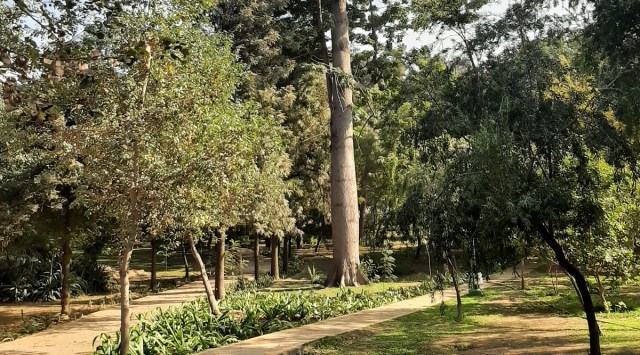- India
- International
6,961 trees to make way for Delhi Metro corridor, proposal gets SC panel nod
Among the 6,169 trees, 921 fall in the southern ridge and south central ridge and 151 in the extended ridge — areas that are ecologically sensitive and considered the lungs of Delhi.
 Moreover, 2,536 fall in deemed forest land while 3,353 stand in non-forest land, as per the report. (Unsplash/ Representational)
Moreover, 2,536 fall in deemed forest land while 3,353 stand in non-forest land, as per the report. (Unsplash/ Representational)
The construction of the Delhi Metro’s Aerocity-Tughlaqabad corridor will claim 6,961 trees — 1,072 in the ecologically sensitive Ridge area alone — with the proposal being approved by a Supreme Court-appointed committee on Wednesday.
According to the Central Empowered Committee’s (CEC) report, it has recommended to the SC that the project be allowed in “public interest”. The report says 4,766 of the 6,961 trees will be felled and the rest transplanted.
Among the 6,169 trees, 921 fall in the southern ridge and south central ridge and 151 in the extended ridge — areas that are ecologically sensitive and considered the lungs of Delhi.
Moreover, 2,536 fall in deemed forest land while 3,353 stand in non-forest land, as per the report.
To try and make up for the loss in ridge areas, a 25-hectare patch of land has been chosen to be developed as a notified protected forest in Dwarka’s Dhusiras village under the Indian Forest Act, 1927. While 34,000 saplings of indigenous species will be planted as compensation for trees felled outside ridge areas under the Delhi Preservation of Trees Act, 1994.

“The corridor proposed has been found to be the most feasible route economically, environmentally and technically for the purpose of daily ridership and will be covering a sizable population… No viable alternative is feasible and the use of the ridge area has been restricted to the minimum,” the CEC observed. The daily ridership on the line has been estimated by the Delhi Metro Rail Corporation (DMRC) at 1.66 lakh trips a day.
The CEC, which was formed by the court in 2002 to monitor matters relating to forest and wildlife, has prepared the report based on meetings with the DMRC, Forest Department, and a site visit.
The construction of the 23.62 km-long corridor will involve the use of a total 1.29 lakh sq m of land in the ridge and extended ridge areas — this includes 74,206 sq m of land in ridge areas, notified as forest land, and 55,548 sq m in extended ridge areas.
As much as 14,865 sq m of land in ridge areas will be required permanently for construction of stations.
In terms of length, a 5.29-km stretch will pass through the ridge and extended ridge areas at five locations.
The DMRC told the committee that 69,673 sq m of 1.29 lakh sq m land will be required temporarily. However, even the temporary requirement will claim as many as 825 trees, shows the report, while 247 trees will be affected in land being taken up permanently.
The ridge areas are extensions of the Aravalli ranges. Agencies are not allowed to carry out constriction in ridge as well as extended ridge areas without permission from the Ridge Management Board (RMB) and the Supreme Court via the CEC. The RMB had approved the project on July 14.
Twice before has the Metro carried out constrictions inside the ridge — while building the Central Secretariat-Qutub Minar-Gurgaon stretch of the Yellow Line and the Airport Express Metro Link, which cuts through the Central Ridge.
The corridor, which will come under DMRC’s Phase IV project, will have 15 stations and will cut through densely populated areas in South Delhi such as Mahipalpur, Vasant Kunj, Kishangarh, IGNOU road, Neb Sarai, Ambedkar Nagar, and Sangam Vihar among others. The line will have interchange facility with Yellow Line at Chhatarpur stations and with Airport Express line at Aerocity.
The other proposed priority corridors under Phase IV are Janakpuri-RK Ashram Marg (28.9-km) and Mukundpur-Maujpur (12.55-km).
May 07: Latest News
- 01
- 02
- 03
- 04
- 05






































